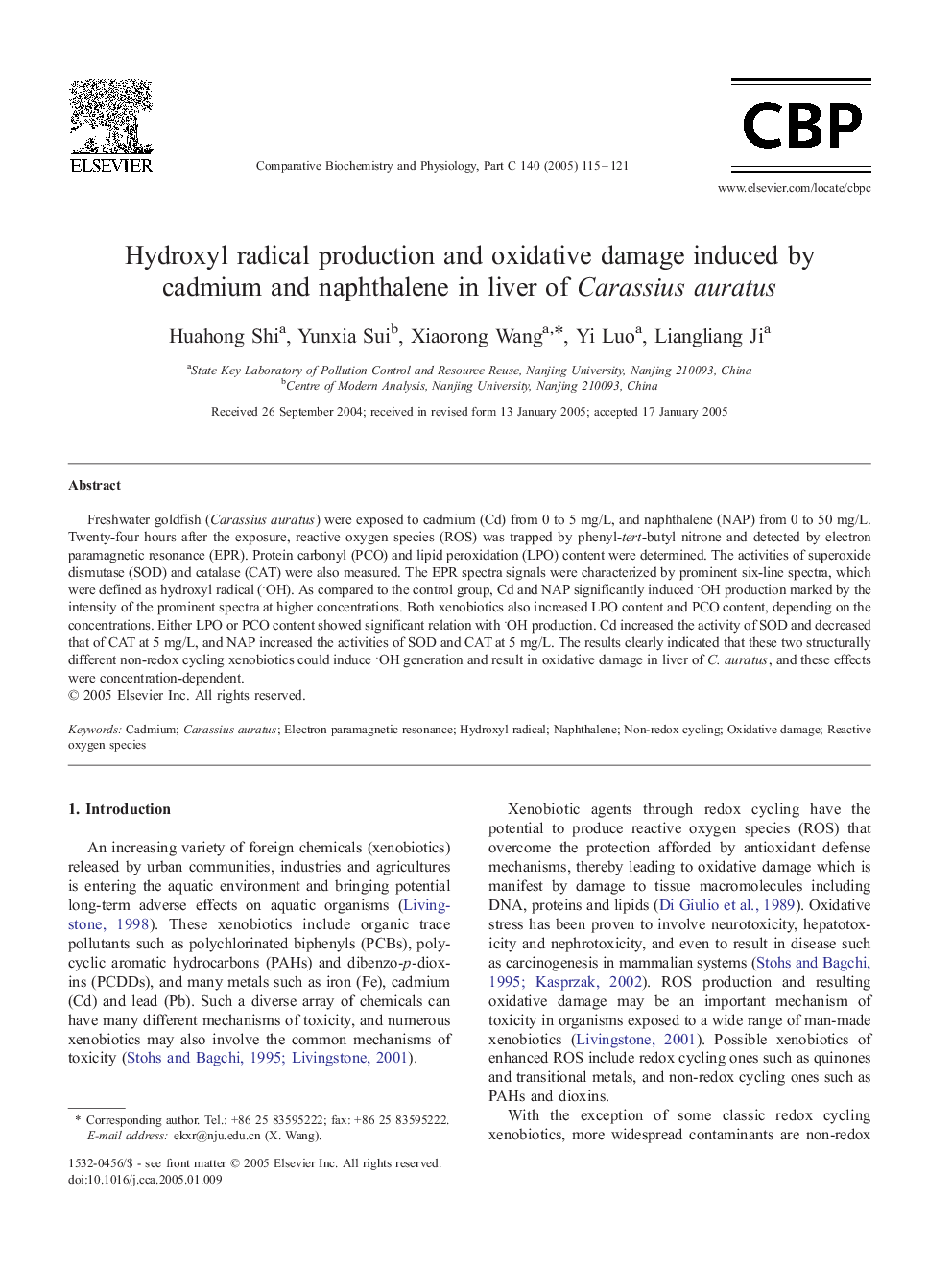| Article ID | Journal | Published Year | Pages | File Type |
|---|---|---|---|---|
| 10821831 | Comparative Biochemistry and Physiology Part C: Toxicology & Pharmacology | 2005 | 7 Pages |
Abstract
Freshwater goldfish (Carassius auratus) were exposed to cadmium (Cd) from 0 to 5 mg/L, and naphthalene (NAP) from 0 to 50 mg/L. Twenty-four hours after the exposure, reactive oxygen species (ROS) was trapped by phenyl-tert-butyl nitrone and detected by electron paramagnetic resonance (EPR). Protein carbonyl (PCO) and lipid peroxidation (LPO) content were determined. The activities of superoxide dismutase (SOD) and catalase (CAT) were also measured. The EPR spectra signals were characterized by prominent six-line spectra, which were defined as hydroxyl radical (OH). As compared to the control group, Cd and NAP significantly induced OH production marked by the intensity of the prominent spectra at higher concentrations. Both xenobiotics also increased LPO content and PCO content, depending on the concentrations. Either LPO or PCO content showed significant relation with OH production. Cd increased the activity of SOD and decreased that of CAT at 5 mg/L, and NAP increased the activities of SOD and CAT at 5 mg/L. The results clearly indicated that these two structurally different non-redox cycling xenobiotics could induce OH generation and result in oxidative damage in liver of C. auratus, and these effects were concentration-dependent.
Keywords
Related Topics
Life Sciences
Biochemistry, Genetics and Molecular Biology
Biochemistry
Authors
Huahong Shi, Yunxia Sui, Xiaorong Wang, Yi Luo, Liangliang Ji,
